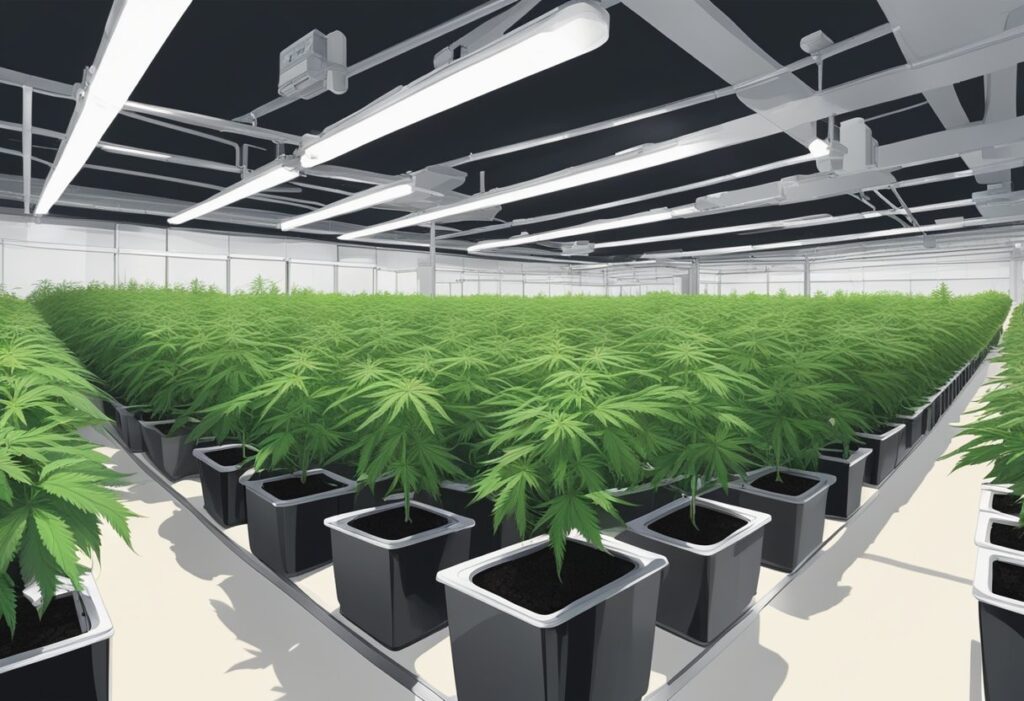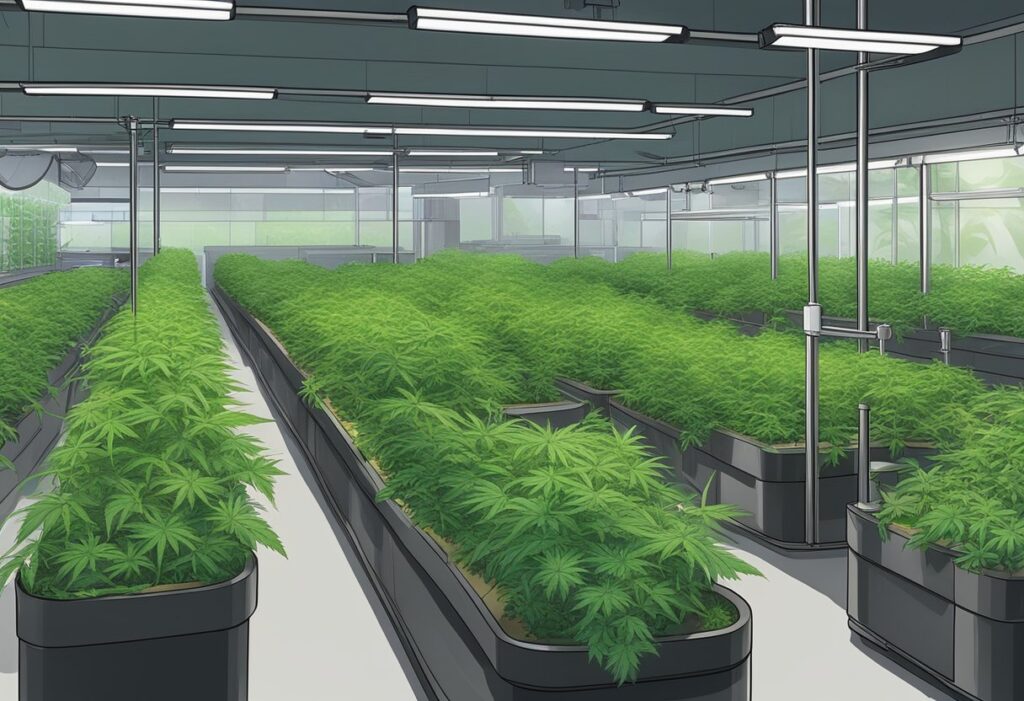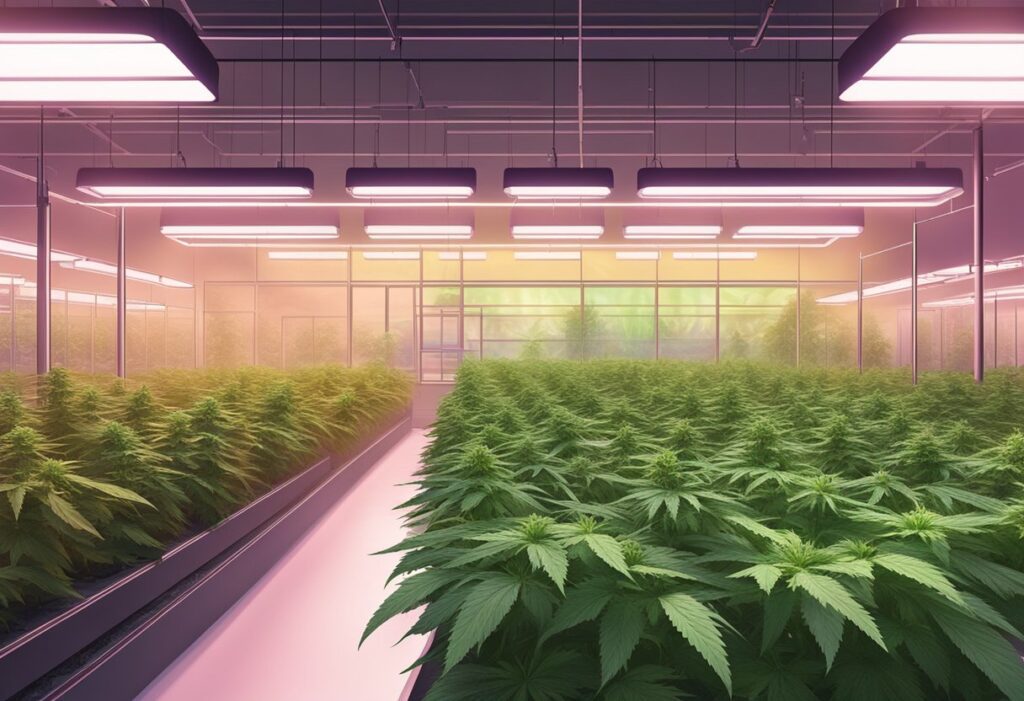
Before diving into advanced cultivation techniques to maximize marijuana yield in Canada, it’s imperative to grasp the fundamentals of cannabis plant growth and genetics. These are the building blocks that will enable you to understand the complexity and potential of your cannabis plants.
Cannabis plants undergo a series of stages in their life cycle, each critical for healthy development and optimal yield. The journey begins with the germination stage, where seeds sprout and begin root development. Following germination, your plants enter the vegetative phase, typically lasting 3-8 weeks, where substantial leaf and stem growth occur. During this stage, cannabis plants require longer daylight hours—usually 18-24 hours of light.
As daylight hours decrease, cannabis transitions into the flowering phase. Female plants start to develop buds, which will eventually be the harvestable part of the plant. The flowering stage can last between 6-8 weeks or longer, depending on the strain. Throughout the life cycle, maintaining optimal conditions such as light, temperature, and nutrients is key to influencing cannabis growth and development.
Cannabis genetics largely determine your plant’s growth habits, resistance to diseases, and yield potential. Genetics dictate whether a plant will express as a sativa, indica, or hybrid, each with distinctive growth patterns, bud structures, and effects. When selecting a strain, consider how its genetic profile aligns with your cultivation goals and environmental conditions.
The plant structure of cannabis is another fundamental aspect that influences yield. A strong and well-developed root system ensures the efficient uptake of nutrients and water. Above ground, the plant’s architecture—composed of stems, leaves, and eventually flowers—is a product of its genetic blueprint and environmental influences.
Focusing on these fundamentals provides a solid understanding of how to nurture your cannabis plants through their life cycle for maximum yield. With a grasp of the vegetative and flowering stages, plant growth needs, and the implications of cannabis genetics, you are better equipped to optimize your cultivation approach for success.

To maximize marijuana yield in Canada, paying close attention to your grow’s environment is essential. Perfecting your light systems, climate control, and nutrient strategies will directly impact the vitality and production capacity of your cannabis plants.
Your choice of lighting is vital for optimizing photosynthesis and ensuring healthy growth. LEDs are currently the most energy-efficient option, offering a spectrum tuned for cannabis growth. The light schedule should mimic the natural sunlight pattern, typically 18 hours of light to 6 hours of darkness during the vegetative stage, and a 12/12 split during flowering to induce bud production.
Meticulous environmental control is necessary to mitigate stress on your plants and promote optimal growth.
Ventilation plays a critical role in maintaining these conditions, effectively dispersing heat and humidity evenly across your growing area.
The quality of your soil and nutrients directly influences the health and yield of your cannabis plants. Here’s how to manage these factors effectively:
Monitor for signs of nutrient burn or deficiencies, and adjust your feeding schedule accordingly. Remember that overfeeding can be just as harmful as underfeeding.
By harnessing these advanced cultivation techniques, you become better equipped to maintain an optimal growing environment that can greatly enhance your marijuana yield in Canada.

Maximizing your marijuana yield requires a combination of advanced cultivation and training techniques. By managing the growth patterns and health of your plants, you can significantly enhance their yield potential.
To optimize your cannabis plant’s growth and yield, integrating effective training techniques is crucial. Low-Stress Training (LST) involves gently bending and tying branches to control the shape and expose more bud sites to light. This can be done by securing branches down in a way that spreads the plant out and creates a flat, even canopy. High-Stress Training (HST) like topping and fimming encourages the plant to grow more branches and increase crop yield by cutting the plant’s main stem, creating multiple new growing tips. Screen of Green (SCROG), an advanced form of LST, involves weaving branches through a horizontal screen, promoting an even canopy for maximized light exposure and bud production.
Pruning techniques are essential for maintaining plant health and maximizing yield. Defoliation, the removal of certain leaves, can improve airflow and light penetration, benefiting overall plant health and reducing the risks of pests and disease. Careful lollipopping, which involves removing lower growth that doesn’t receive much light, ensures the plant focuses its energy on the top buds. These techniques also help in managing your plant’s energy distribution, directing it towards bud sites which are most likely to develop into productive harvests.
Harvest timing is pivotal for achieving peak potency and maximizing yields. Look for cues in the trichomes, the tiny resin glands on the buds which change from clear to a milky or amber color as they mature. Harvesting too early or too late can affect both the quantity and quality of your yield. Employ consistency in your approach by developing a schedule that aligns with the flowering cycle of your cannabis plants. Post-harvest, techniques like proper trimming, curing, and drying will preserve the flavor and potency of the cannabis flower.
Consistent Harvest Schedule: Align your harvest with the plant flowering cycle and trichome maturation for optimal results.
When bending stems, also known as low-stress training (LST), gently bend and tie down branches to expose lower parts of the plant to light. This increases cola density and yield without damaging the plant.
Implement techniques like super cropping with care, which involves gently pinching and bending stems to stress them and induce a robust healing response. Ensure you monitor plants closely for signs of over-stressing.
Your plants need a mix rich in nitrogen, potassium, and phosphorus, along with micronutrients like calcium and magnesium. This supports healthy foliage growth and sets the foundation for future yield.
Use advanced methods like topping or pruning to aid in light distribution and airflow. Additionally, implementing companion planting can protect your crop from pests and enhance growth.
Flush your plants to remove built-up nutrients in the soil and reduce harshness in the final product. Also, gradually decrease light exposure to mimic fall season conditions which can boost resin production.
We ship and deliver world wide via USPS and various couriers.
We offer a wide range of secure and anonymous online payment options.
We care about you, our customer. Please contact us with any questions or concerns.
Find out more about the benefits of being a loyal and regular customer.
WE ARE EVERY GROWERS ONE STOP SHOP TO ACQUIRE PREMIUM CANNABIS SEEDS FOR SALE IN THE USA, CANADA AND AUSTRALIA

Farmers Lab Seeds 2024, | All Right Reserved
Seeds are sold as novelty items, souvenirs, and collectibles. They contain 0% THC. We encourage our customers to check the legislation in their Country, State, Province, and Municipality prior to purchasing items from our store. We do not provide growing information.
All seeds are sold as hemp, and lab tested under 0.3% THC. This product is not for use by or sale to persons under the age of 21. This product should be used only as directed on the label. It should not be used if you are pregnant or nursing. Consult with a physician before use if you have a serious medical condition or use prescription medications. A Doctor’s advice should be sought before using this and any supplemental dietary product. All trademarks and copyrights are property of their respective owners and are not affiliated with nor do they endorse this product.
These statements have not been evaluated by the FDA. This product is not intended to diagnose, treat, cure or prevent any disease. Individual weight loss results will vary. By using this site, you agree to follow the Privacy Policy and all Terms & Conditions printed on this site. Void Where Prohibited by Law.